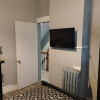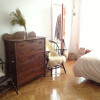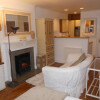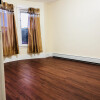1 Apartment For rent in district / neighbourhood Inwood in New York
Living in the district / neighbourhood Inwood in New York
About the district / neighbourhood Inwood in New York
Inwood, located at the northern tip of Manhattan, is a neighborhood rich in natural beauty, history, and cultural significance. Surrounded by the Harlem River and the Hudson River, it offers a unique blend of urban living and expansive green spaces. Inwood’s history stretches back to pre-colonial times, and its landmarks reflect the area’s dynamic past. History of Inwood
Inwood’s history is deeply tied to the indigenous Lenape people, who inhabited the area long before Dutch settlers arrived in the 17th century. Inwood Hill Park is believed to be the site where the Lenape sold Manhattan Island to the Dutch in 1626, an event that remains part of local lore. As the city expanded northward, Inwood became a quieter, more rural section of Manhattan before developing into the residential neighborhood it is today.
During the 20th century, Inwood saw an influx of immigrants, particularly Irish, Jewish, and Greek populations. In more recent decades, it has become a hub for Dominican and other Latin American communities, contributing to its rich cultural diversity. Landmarks and Points of Interest
Inwood Hill Park: Inwood Hill Park is perhaps the neighborhood’s most famous landmark, offering a rare glimpse of what Manhattan looked like before urbanization. The park is home to the last natural forest and salt marsh in Manhattan, with rolling hills, dense woods, and scenic waterfront views. It's a popular destination for outdoor activities like hiking, bird-watching, and picnicking.
The park also contains the Shorakkopoch Rock, a commemorative marker that supposedly indicates the site where Peter Minuit purchased Manhattan from the Lenape. Whether or not this is entirely accurate, it symbolizes the historical importance of the area.
The Dyckman Farmhouse Museum: Located at the intersection of Broadway and 204th Street, the Dyckman Farmhouse is a rare reminder of colonial Manhattan. Built in 1784 by the Dyckman family, Dutch farmers who settled in the area, the farmhouse is the oldest remaining Dutch colonial-style farmhouse in Manhattan. Now a museum, it offers a window into early life in the region, featuring period rooms, artifacts, and educational exhibits about colonial farming.
Fort Tryon Park: Though technically shared with the neighboring area of Washington Heights, Fort Tryon Park is a major landmark for Inwood residents. The park, designed by Frederick Law Olmsted Jr. (son of the Central Park co-designer), offers breathtaking views of the Hudson River and the Palisades. One of the park’s most iconic features is The Cloisters, a branch of the Metropolitan Museum of Art dedicated to medieval European art and architecture. The park's winding paths, lush gardens, and historic structures make it a peaceful retreat from the city's hustle and bustle.
Isham Park: A quieter alternative to the larger Inwood Hill Park, Isham Park is a neighborhood gem that provides open lawns, tree-lined paths, and historic structures. It was originally part of the estate owned by William Isham, a 19th-century businessman, and philanthropist. The park offers a tranquil space for community gatherings and activities, as well as stunning views of the surrounding area.
Inwood Marble Hill Station (Metro-North Railroad): Although it's not in the heart of Inwood, Marble Hill Station, a Metro-North stop, plays an important role in the area’s connectivity. Inwood’s relatively quiet streets make the neighborhood feel distant from Midtown Manhattan, but the Metro-North station provides quick access to the rest of the city and beyond.
Church of the Good Shepherd: Located at Broadway and Isham Street, the Church of the Good Shepherd has served as a spiritual and community hub for Inwood residents for over a century. Established in 1911, the church has long been associated with the Irish-American community in the area but now reflects the neighborhood’s increasing diversity.
Cultural Significance and Community
Inwood’s residents come from a variety of cultural backgrounds, with a significant Dominican population alongside other Latin American communities. This diversity is reflected in the neighborhood’s lively street life, with bustling markets, vibrant festivals, and restaurants offering a wide array of Latin American cuisine.
Inwood’s cultural identity is further strengthened by its many parks and public spaces, which foster a strong sense of community. Residents often gather for sports, music, or picnics in parks like Inwood Hill and Isham, making the neighborhood feel tight-knit and welcoming despite its size. Conclusion
Inwood is one of Manhattan’s most historically significant and naturally beautiful neighborhoods. From the ancient hills of Inwood Hill Park to the colonial history preserved at the Dyckman Farmhouse, it offers a unique blend of New York City history and culture. Its lush parks, diverse community, and rich heritage make it a hidden gem on the island of Manhattan, offering a peaceful respite from the city's constant activity while still remaining connected to its vibrant cultural fabric.






















